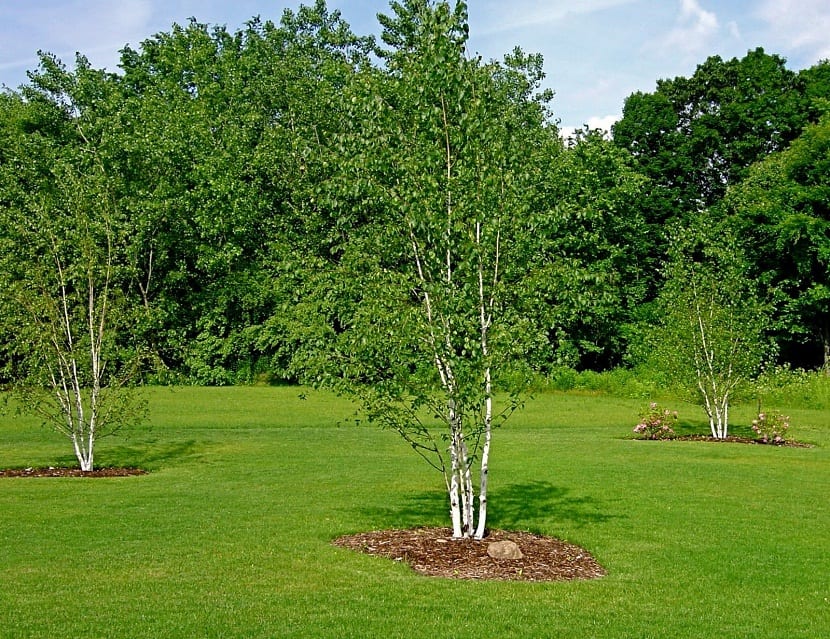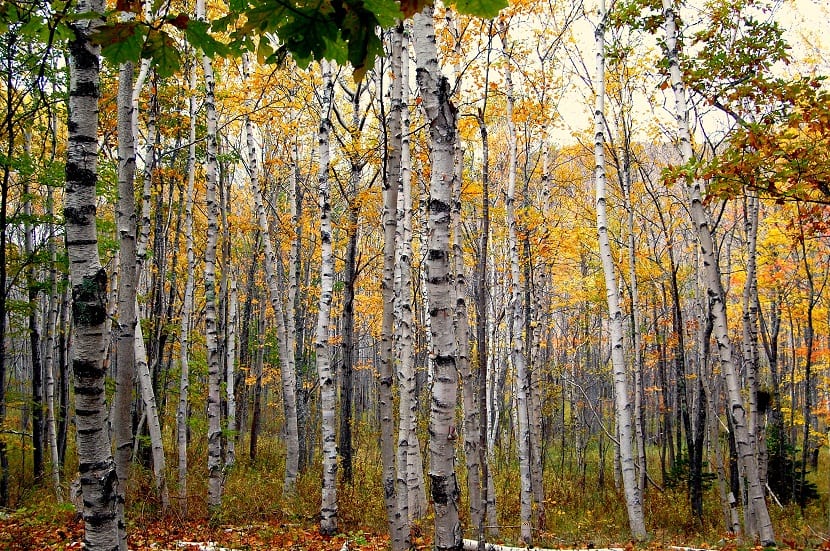
Betula papyrifera is the scientific way of naming the plant commonly known by the name of white birch, canoe birch and paper birch. This species belongs to the genus Betula, like other species such as the Betula alleghaniensis Britton, Betula ermanii Cham and Betula alnoides Buch.-Ham.
Let's find out below where this comes from famous tree, what are its distinctive notes, what measures should we take when caring for them, what they are for and more curiosities that will allow us to know this plant from all its edges.
From

White birch is native to northern North America and Greenland.
Features Betula papyrifera
This tree is large. It can reach twenty meters in height (in some exceptional cases it reaches 35 meters) and measure up to five meters wide. Its bark is white and often shiny, with fine scales that appear in horizontal strips.
It is resistant to nutrient-poor soils and prefers them with neutral pH, acidic or alkaline. The ideal substrate is sandy, clayey, loamy or very clayey. The form of pollination of its flowers is through anemophilia.
Care and cultivation
While soil moisture must be maintained, it should be done taking into account different factors, for example the level of sun exposure, humidity, temperature, etc.
It must be drained very well so that these do not occur, since this tree does not tolerate it. It will only survive with a lot of light so it should be exposed directly to the sun and better suited to temperate climates.
For the roots to grow strong and growth is fast during the first year, it is recommended apply slow release compost in the planting hole. The advisable dose is 50 grams per plant.
For the good cultivation and maintenance of any plant it is necessary to know your times in relation to nature and in what to the Betula papyrifera is concerned, its life cycle varies depending on whether it is in the Northern Hemisphere or the Southern Hemisphere. It remains in flower for four months in the first hemisphere and ten in the second.. The number of months is invested when it comes to collecting seeds.
Plagues and diseases
As long as they are not completely neglected, this variety of plants is highly resistant to pests and diseases.
Uses
Not only can it be used as an ornamental plant, but it also has numerous medicinal and food uses. In relation to health care, this tree can serve as an antirheumatic, astringent, poultice maker, sedative, and ointment maker.

It also has sedative properties and is used for the treatment of stones. As for food, it is possible to take advantage of both its inner bark and its leaves, roots and sap. With the latter, a syrup similar to maple is made. In any case, we must remember a not minor detail and that is that betula syrup is more expensive than that extracted from maple since a greater amount of sap is needed to make the same amount of product.
Another curious way to take advantage of this tree is making use of its resistant bark. This can be used for covering house and canoe roofs, given its waterproof nature. At the same time, it is cut down to use its wood in the construction of furniture and as firewood, since it burns very well (mainly the bark, which even when wet can easily light the fire).
It also collaborates with the cultural identity of the peoples. In this sense, it is a emblem in both the province of Saskatchewan and the New Hampshire State Tree. Despite the interesting features mentioned in this article and the uses of the Betula papyrifera, its conservation is being threatened. In the State of Indiana it has been declared as a vulnerable species and in Illinois, Virginia, West Virginia and Wyoming, as an endangered variety.